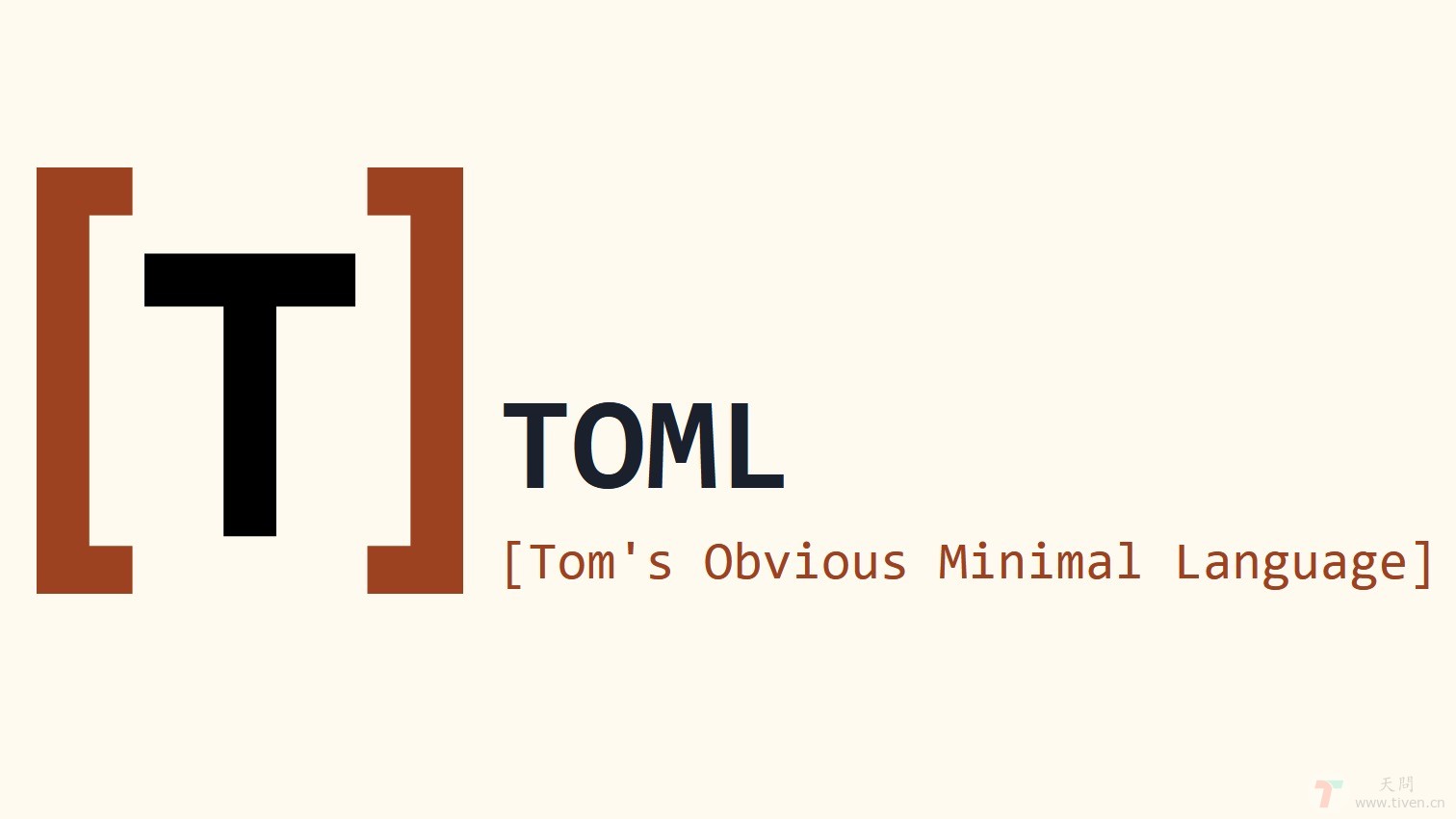阅读量:0
在软件开发过程中,自动化处理配置文件是一种常见的需求。TOML(Tom’s Obvious, Minimal Language)是一种用于配置文件的简单易读的格式。本文将展示如何使用Node.js和一些流行的库来自动化读取、修改并写入TOML文件。

1. 准备工作
在开始之前,我们需要安装一些必要的Node.js库。这些库包括smol-toml用于解析和字符串化TOML文件。
pnpm i -D smol-toml Cargo.toml内容如下:
[package] name = "min-api" version = "4.0.0" description = "一个基于Tauri和React开发,用于http/https接口测试的工具" authors = ["Tive"] license = "" repository = "" edition = "2021" # See more keys and their definitions at https://doc.rust-lang.org/cargo/reference/manifest.html [build-dependencies] tauri-build = { version = "1.4", features = [] } [dependencies] tauri = { version = "1.4", features = [ "window-all", "dialog-all", "fs-all", "protocol-all", "path-all", "process-all", "global-shortcut-all", "http-all", "http-multipart", "shell-open"] } serde = { version = "1.0", features = ["derive"] } serde_json = "1.0" [features] # this feature is used for production builds or when `devPath` points to the filesystem # DO NOT REMOVE!! custom-protocol = ["tauri/custom-protocol"] 2. 代码解析
以下是一段示例代码,展示了如何使用这些库来自动化处理TOML文件。
const { parse, stringify } = require('smol-toml') const { join } = require('path') const { readFile, writeFile } = require('node:fs/promises') const { version } = require('../package.json') const filepath = join(__dirname, '../src-tauri/Cargo.toml') !(async function main() { try { let data = await readFile(filepath, 'utf8') // 解析 toml let config = parse(data) console.log('Parsed TOML:', config) console.log(config.package.version) // 修改 toml 的版本号 config.package.version = version const updatedData = stringify(config) console.log(updatedData) // 写入 toml 文件 await writeFile(filepath, updatedData, 'utf8') } catch (e) { console.log(e) } })() 3. 代码解释
- 导入库:首先,我们导入了必要的库。
parse和stringify函数用于处理TOML文件的解析和字符串化,join函数用于构建文件路径,readFile和writeFile函数用于异步读取和写入文件。 - 文件路径:使用
join函数构建TOML文件的路径。 - 异步函数:使用自执行的异步函数
main来处理文件操作。这样可以确保代码的执行顺序,并在出现错误时及时捕获。 - 读取文件:使用
readFile函数异步读取TOML文件的内容。 - 解析TOML:将读取到的文件内容使用
parse函数解析为JavaScript对象。 - 修改版本号:将解析得到的配置对象中的
package.version属性更新为项目版本号。 - 字符串化TOML:将修改后的配置对象使用
stringify函数转换回TOML格式的字符串。 - 写入文件:使用
writeFile函数将更新后的TOML字符串写入文件。
4. 使用场景
这种自动化处理TOML文件的方法可以应用于多种场景,例如:
- 持续集成/持续部署(CI/CD):在自动化构建过程中更新配置文件。
- 版本管理:在发布新版本时自动更新配置文件中的版本号。
- 配置迁移:在迁移项目时自动更新配置文件。
结论
通过使用Node.js和相关库,我们可以轻松地实现对TOML文件的自动化处理。这种方法不仅提高了开发效率,还减少了人为错误的可能性。
参考文档
欢迎来到我的技术博客,今天我们探讨了如何使用Node.js自动化处理TOML文件。希望这篇文章对你有所帮助!
欢迎访问:天问博客
